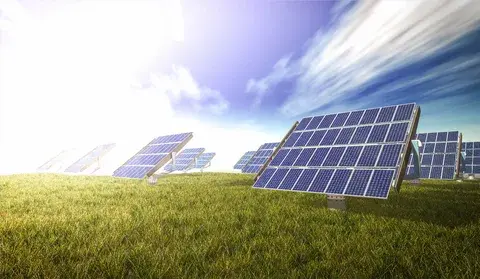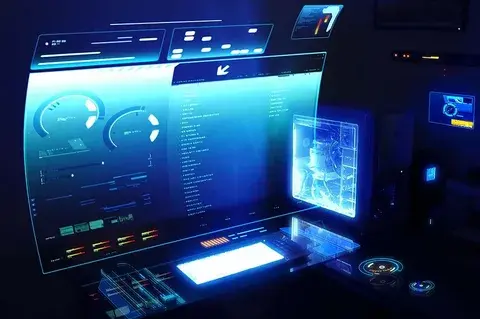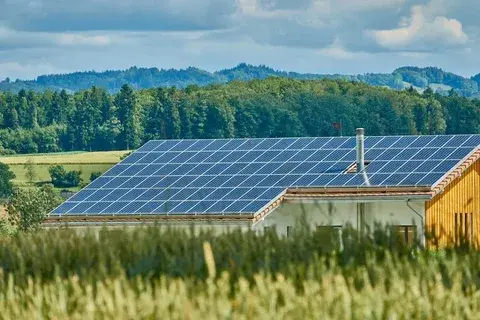Have you ever wondered how technology keeps evolving to meet our ever-changing needs?
Let’s talk about one of the coolest innovations: the XCV Panel.
This cutting-edge solar panel technology is transforming the way we harness solar energy.
In this article, I’ll break down the benefits of XCV Panels, how they work, and why they’re shaping the future of renewable energy.


-
What are XCV Panels? xcv panel
So, what exactly are XCV Panels?
These solar panels are designed to be lightweight, flexible, and super efficient.
Unlike those bulky, traditional solar panels, XCV Panels can be easily integrated into various surfaces—think roofs, buildings, and even vehicles.
This flexibility makes them a fantastic choice for both residential and commercial use.
- How Do XCV Panels Work?
Here’s the fun part—how do these panels work?
XCV Panels harness the power of the sun through something called photovoltaic cells.
These nifty cells convert sunlight into electricity.
Here’s a quick breakdown of their structure:
- Protective outer layer: Shields the panel from the elements.
- A layer of photovoltaic cells: Where the magic happens, converting sunlight into energy.
- Backsheet: Provides structural support.
The photovoltaic cells generate direct current (DC) electricity when sunlight hits the panels.
This is then transformed into alternating current (AC) electricity through an inverter, making it usable in our homes and businesses.
- Why Choose XCV Panels?
Now, why should you consider XCV Panels over traditional options?
Let me hit you with a few key reasons:
- Lightweight and flexible design: Easy to install on a variety of surfaces.
- Seamless integration: They fit right into existing structures without a fuss.
- Higher efficiency: XCV Panels convert a greater percentage of sunlight into electricity, which means lower energy bills and a smaller carbon footprint.
Sounds pretty appealing.
- Benefits of XCV Panels
Let’s break down the benefits further:
- Flexibility: These panels can be installed on curved or irregular surfaces, making them perfect for all applications.
- Portability: Their lightweight design makes transportation and installation in remote locations a breeze.
- Durability: Made from high-quality materials, XCV Panels are built to withstand harsh weather conditions, ensuring longevity.
- Efficiency: With a high energy conversion rate, they ensure maximum power output for your energy needs.
- Sustainability: XCV Panels help lower carbon emissions by reducing reliance on fossil fuels.
- Types of XCV Panels
Are you curious about the different types of XCV Panels out there?
Here’s a quick overview based on materials and technologies:
- Monocrystalline Panels: Made from single-crystal silicon, these panels offer high efficiency and durability. They’re pricier but excel in low-light conditions.
- Polycrystalline Panels: These are made of multiple-crystal silicon cells. They’re more affordable but less efficient than monocrystalline panels.
- Thin-film Panels: Constructed from thin layers of materials like amorphous silicon, cadmium telluride, or copper indium gallium selenide.
Each type has its perks, so considering your specific needs is worth considering.
- Areas of Application for XCV Panels
XCV Panels are gaining popularity across various industries due to their versatility.
Here are some common areas where they shine:
Construction Industry
- Widely used for roofing, siding, and insulation.
- Their lightweight nature makes them popular among contractors and builders.
- They also provide excellent thermal insulation properties.
Automotive Industry
- Lightweight and fuel-efficient vehicles are all the rage.
- XCV Panels help reduce the vehicle’s overall weight, improving fuel efficiency and performance.
- They offer great impact resistance, making them a reliable choice for manufacturers.
Aerospace Industry
- In aerospace, XCV Panels are used for aircraft components.
- Their high strength-to-weight ratio is crucial for weight reduction.
- Common applications include aircraft wings and fuselage.
Renewable Energy Sector
- It is commonly used in solar panels and wind turbines.
- They enhance the efficiency of solar panels and provide lightweight support structures.
Marine Industry
- Perfect for building boats, yachts, and other watercraft.
- They resist water, UV rays, and corrosion, making them ideal for marine applications.
- How to Efficiently Install XCV Panels: A Step-by-Step Guide
Are you thinking about installing XCV panels now?
Let’s make it easy with this step-by-step guide!
Preparation is Key
Before you start, gather your tools and materials:
- XCV panels
- Screws
- Drill
- Level
- Tape measure
- Safety goggles
- Gloves


Once you have everything ready, you can dive into the installation process.
Step 1: Measure and Mark
- Use a tape measure to find the precise measurements of the area.
- Mark where the panels will go.
- Make sure to use a level to keep things straight.
Step 2: Drill Holes
- Grab your drill and create holes in the marked spots.
- Use the right drill bit size for your screws.
- This step ensures a secure installation.
Step 3: Install Panels
- Line up the panels with the holes you’ve created.
- Use screws to secure them in place.
- Make sure to tighten the screws securely.
Step 4: Finishing Touches
- Check your installation for any adjustments.
- Use a level to ensure everything is aligned correctly.
Congrats! You’ve just installed your XCV Panels like a pro.
- FAQs on XCV Panels
Have you got questions? I’ve got answers!
How do XCV Panels benefit me?
They offer benefits like reduced electricity bills and a lower carbon footprint, making them a sustainable choice.
Are XCV Panels suitable for my location?
Absolutely! They can be installed in various locations, but factors like sunlight exposure and local regulations should be considered.
Can I install XCV Panels myself?
Yes, you can! But hiring a professional solar installer is always a safe bet.
What maintenance do XCV Panels require?
They’re low-maintenance! Just a bit of occasional cleaning and inspection to keep them in top shape.
How long do XCV Panels last?
Typically, they last about 25 years, with many manufacturers offering warranties for performance.
- Conclusion
In a nutshell, XCV Panels are a game-changer in renewable energy.
They’re flexible, efficient, and sustainable—leading the charge towards a cleaner, greener future.
So, why wait?
Switch to XCV technology today and enjoy the benefits of clean, renewable energy for years to come!






Leave a Reply